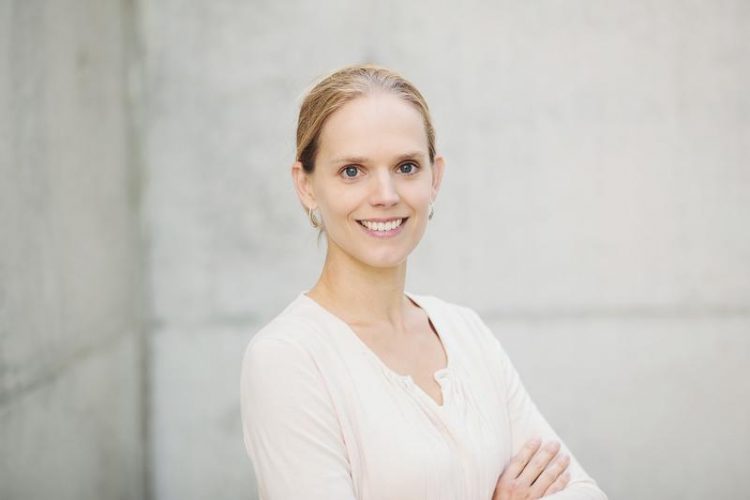Research on injectable oriented hydrogels for spinal cord repair

Dr.-Ing. Laura De Laporte receives an ERC Starting Grant Photo: Phatcharin Tha-in
Spinal cord injury affects approximately two million people worldwide and is devastating as it leads to a loss of motor and sensory function below the point of injury. Regenerative therapies therefore try to restore nerve tracts and their function.
Human neural stem cells or oligodendrocytes, which form the myelin sheet around the nerve cells, have been successfully transplanted into the damaged area and have created a spark of hope. To support these transplanted and other native cells at the injury site, and to guide neuron growth across this area, scientists are also investigating nerve bridges that are made of biomaterials, provide functional domains, and release growths factors.
Unfortunately, such implants still face the challenge to stimulate the growing nerves to cross the point of injury and reenter the healthy spinal cord to rebuild functional connections.
In her project ANISOGEL, Laura De Laporte will engineer an injectable biomaterial that can be used as a matrix for a minimally invasive therapy to support oriented regeneration of damaged nerves. The material is based on a soft, water-rich polymeric network (hydrogel), which gels in situ and can be designed to mimic the conditions of the natural cell environment.
The physical, chemical, and biological properties of these gels can be tailored bottom-up to resemble the body’s own extracellular matrix that provides mechanical and biological support to the cells.
“A hydrogel-based approach is not new. The innovative aspect about ANISOGEL is that we want to synthesize a material that can be hierarchically structured and form an anisotropic architecture in situ,” explains De Laporte.
“This will improve the cells’ spatial orientation, which is crucial for nerve repair. The hydrogel will be further modified with biological signaling molecules to create an environment that stimulates cellular processes necessary for spinal cord regeneration and to regain functionality.”
Laura De Laporte received her Masters in Chemical Engineering at the University of Ghent and obtained her PhD in the laboratory of Prof. Lonnie Shea at Northwestern University in the United States. There, she focused on the development of multiple channel bridges with the ability for DNA and protein delivery for spinal cord repair.
As a post-doctoral researcher at EPFL (Switzerland) in the laboratory of Prof. Jeffrey Hubbell, she engineered extracellular matrix-like hydrogels for tissue and nerve repair. She started her junior research group at DWI in October 2013. With the ERC Starting Grant, the European Research Council supports her work for the next five years.
Media Contact
More Information:
http://www.dwi.rwth-aachen.deAll latest news from the category: Health and Medicine
This subject area encompasses research and studies in the field of human medicine.
Among the wide-ranging list of topics covered here are anesthesiology, anatomy, surgery, human genetics, hygiene and environmental medicine, internal medicine, neurology, pharmacology, physiology, urology and dental medicine.
Newest articles

High-energy-density aqueous battery based on halogen multi-electron transfer
Traditional non-aqueous lithium-ion batteries have a high energy density, but their safety is compromised due to the flammable organic electrolytes they utilize. Aqueous batteries use water as the solvent for…

First-ever combined heart pump and pig kidney transplant
…gives new hope to patient with terminal illness. Surgeons at NYU Langone Health performed the first-ever combined mechanical heart pump and gene-edited pig kidney transplant surgery in a 54-year-old woman…

Biophysics: Testing how well biomarkers work
LMU researchers have developed a method to determine how reliably target proteins can be labeled using super-resolution fluorescence microscopy. Modern microscopy techniques make it possible to examine the inner workings…





















